Search results for: “power factor”
-
US decarbonization: energy and CO2 emissions?
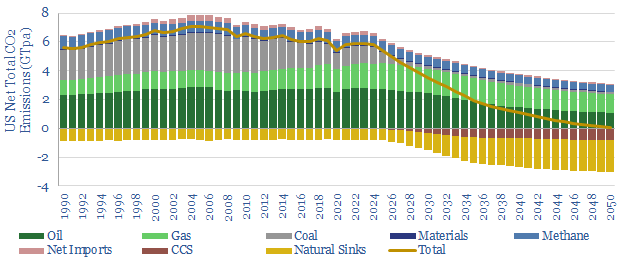
The US consumes 25,000 TWH of primary energy per year, which equates to 13,000 TWH of useful energy, and emits 6GTpa of CO2. This model captures our best estimates for what a pragmatic and economical decarbonization of the US will look like, reaching net zero in 2050, with forecasts for wind, solar, nuclear, hydro, oil,…
-
Wind generation case study: minute by minute volatility?
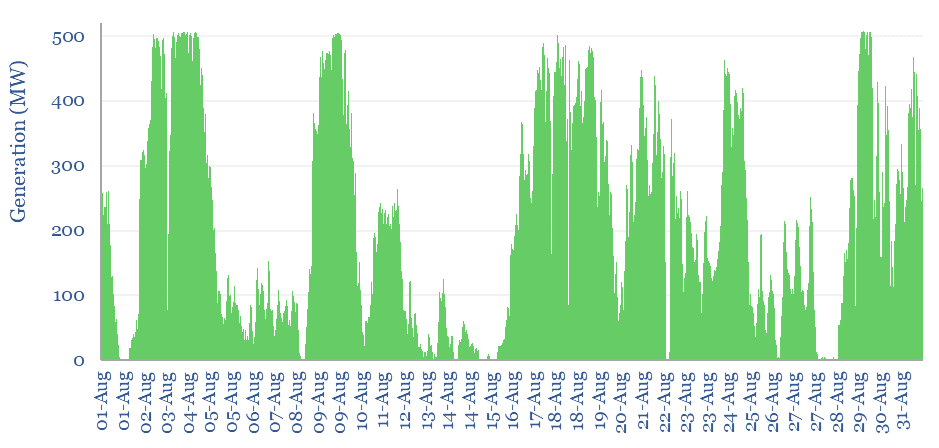
The volatility of wind generation is illustrated in this data-file, by aggregating the data for a large wind project in Australia, every five minutes, across an entire calendar year. Intra-day and inter-day volatility is 30-60% higher than for solar. 2-6 day feasts and famines are hard to backstop with batteries. Solar also cannibalizes wind?
-
Oxycombustion: economics of zero-carbon gas?
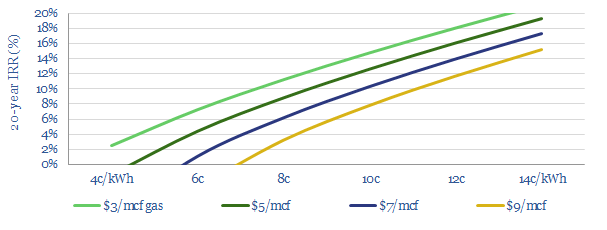
Oxy-combustion is a next-generation power technology, burning fossil fuels in an inert atmosphere of CO2 and oxygen. It is easy to sequester CO2 from its exhaust gases, helping heat and power to decarbonise. We argue that IRRs can be competitive with conventional gas-fired power plants.
-
Biomass power: costs, levelized costs and BECCS?
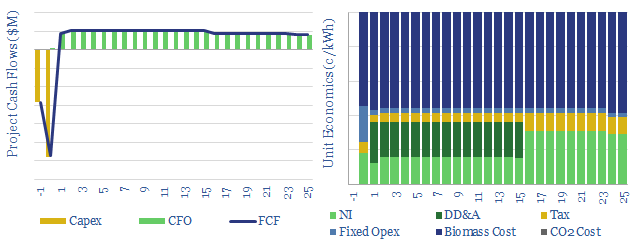
This data-file captures the economics of producing wood pellets, generating electricity from biomass, and potentially also building a further CCS facility to yield ‘carbon negative power’ (which is nevertheless more CO2 intensive than burning gas!). Our numbers are backstopped by industry data, including 340 US biomass plants.
-
Power-MOSFETs: leading companies?
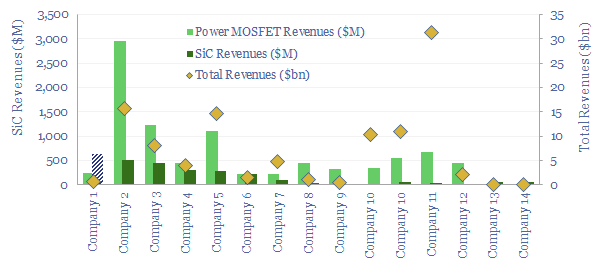
Power MOSFETs are an energy transition technology, the building block behind inverters, DC-DC converters, EV drive trains, EV chargers and other renewables-battery interfaces. Hence this data-file is a screen of companies making power MOSFETs, especially new and higher-efficiency devices using Silicon Carbide as the semi-conductor.
-
DC-DC power converters: efficiency calculations?
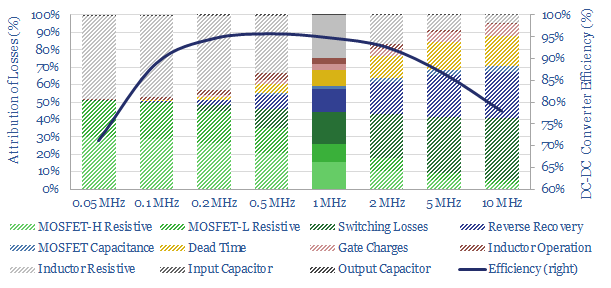
DC-DC power converters are used to alter the voltage in DC circuits, such as in wind turbines, solar MPPT, batteries and digital/computing devices. This data-file is a breakdown of DC-DC power converters’ electrical efficiency, which will typically be around 95%. Losses are higher at low loads. We think there will be upside for increasingly high-quality…
-
US power generation under development over time?
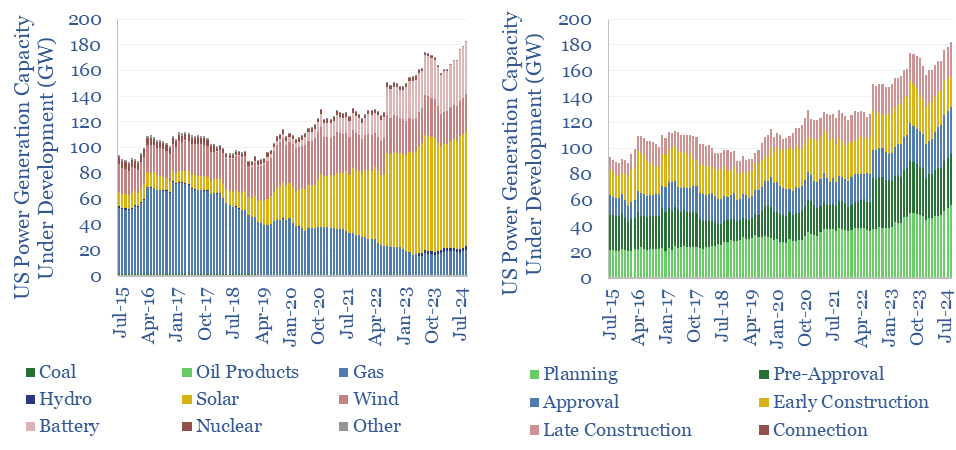
An all-time record of 180GW of new power generation is currently under development in the US in 4Q24, enough to expand the US’s 1.3TW power grid by almost 15%. This data-file tracks US power generation under development, as a leading indicator for gas turbine, wind, solar and battery demand. Gas turbines and battery co-deployments are…
-
Solar+battery co-deployments: output profiles?
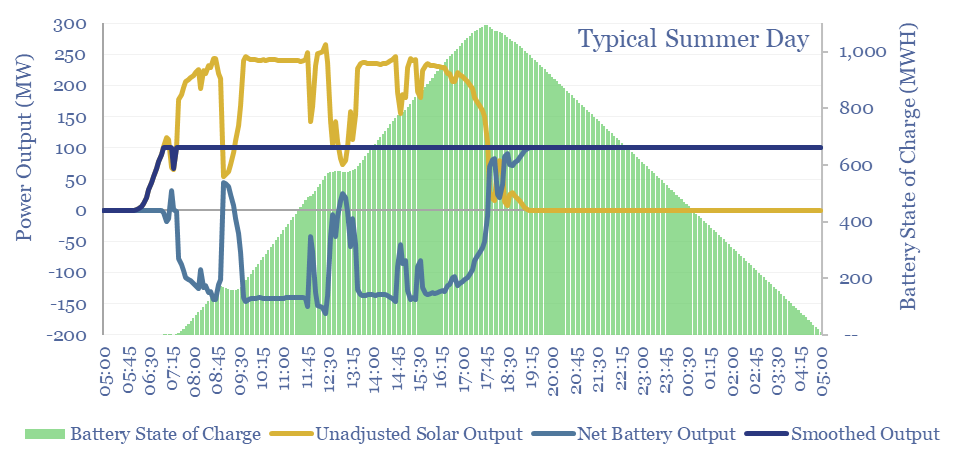
Solar+battery co-deployments allow a large and volatile solar asset to produce a moderate-sized and non-volatile power output, during 40-50% of all the hours throughout a calendar year. The smooth output is easier to integrate with power grids, including with a smaller grid connection. The battery will realistically cycle 100-300 times per year.
-
Electromagnetic energy: Planck, Shockley-Queisser, power beaming?
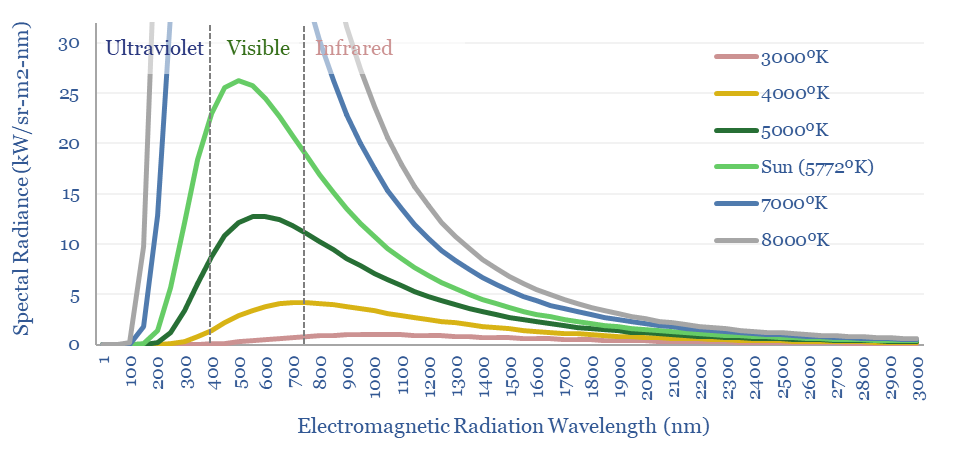
Electromagentic radiation is a form of energy, exemplified by light, infrared, ultraviolet, microwaves and radiowaves. What is the energy content of light? How much of it can be captured in a solar module? And what implications? We answer these questions by explaining the Planck Equation and Shockley-Queisser limit from first principles.
-
Combined heat and power turbines: market sizing?
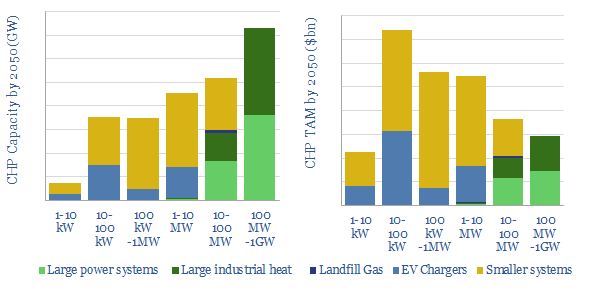
The purpose of this data-file is to ballpark the ultimate potential market size for combined heat and power systems in the US (CHPs). Our build-up looks across five main categories: large power facilities, large industrial heating facilities, landfill gas, electric vehicle charging and smaller-scale commercial and multi-family usage.
Content by Category
- Batteries (87)
- Biofuels (42)
- Carbon Intensity (49)
- CCS (63)
- CO2 Removals (9)
- Coal (38)
- Company Diligence (92)
- Data Models (823)
- Decarbonization (159)
- Demand (110)
- Digital (58)
- Downstream (44)
- Economic Model (200)
- Energy Efficiency (75)
- Hydrogen (63)
- Industry Data (276)
- LNG (48)
- Materials (81)
- Metals (75)
- Midstream (43)
- Natural Gas (146)
- Nature (76)
- Nuclear (23)
- Oil (163)
- Patents (38)
- Plastics (44)
- Power Grids (124)
- Renewables (149)
- Screen (112)
- Semiconductors (30)
- Shale (51)
- Solar (67)
- Supply-Demand (45)
- Vehicles (90)
- Wind (43)
- Written Research (347)